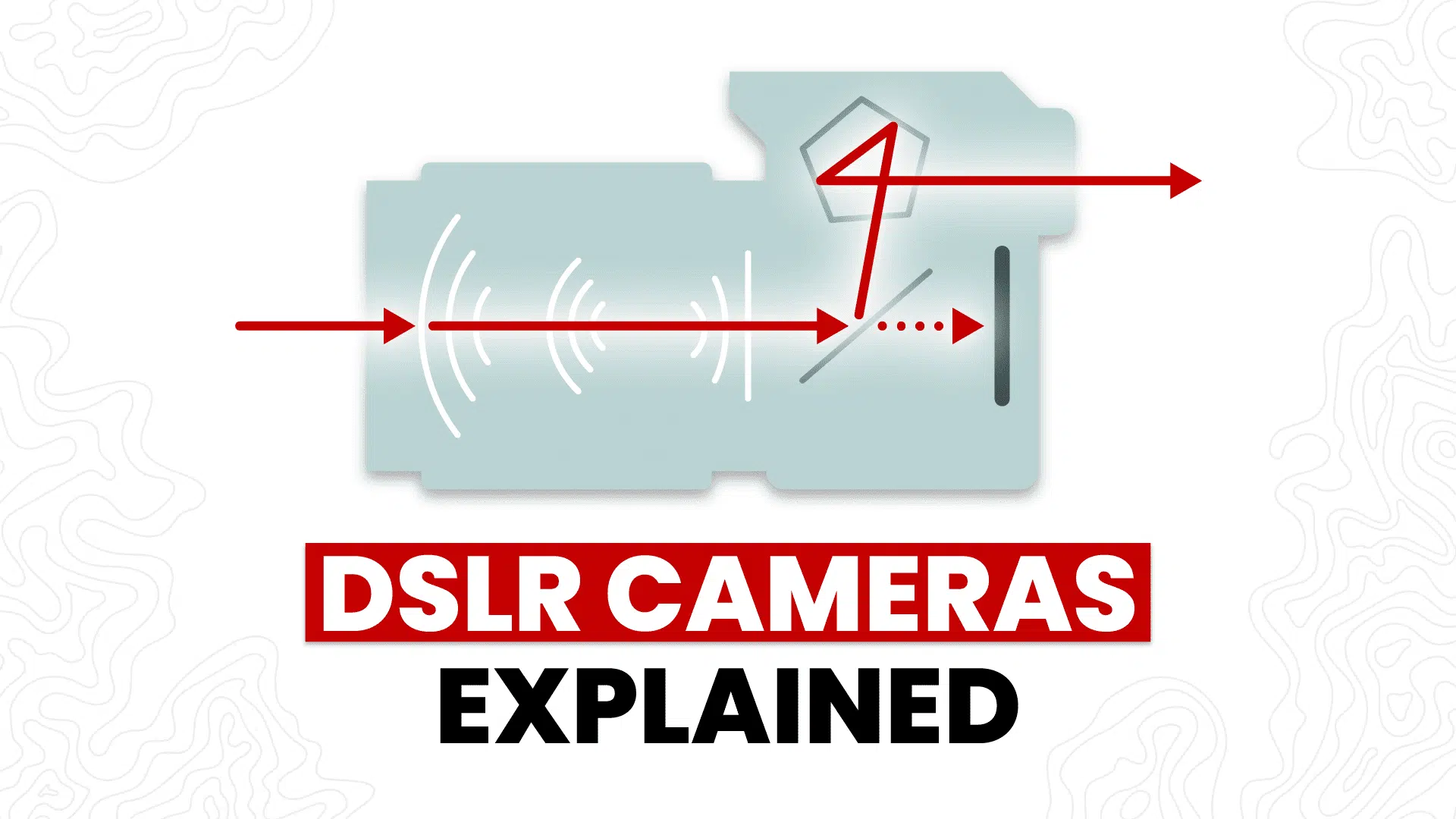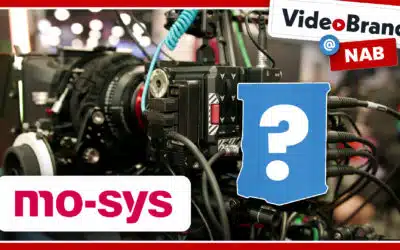What is a DSLR Camera? If you’re reading this, chances are you’ve heard of a DSLR camera before. You might have seen them in the hands of professional photographers and wondered what they were. There’s a good chance that you’ll need one for your business or work too!
This blog post will help guide you through everything there is to know about DSLRs so far as their uses, features, and specifications.
You’ll learn all the basics of DSLR cameras and how to use them in just a few minutes. We will also cover mirrorless cameras and talk about their benefits, before finishing up with some information on what makes one camera better than another.
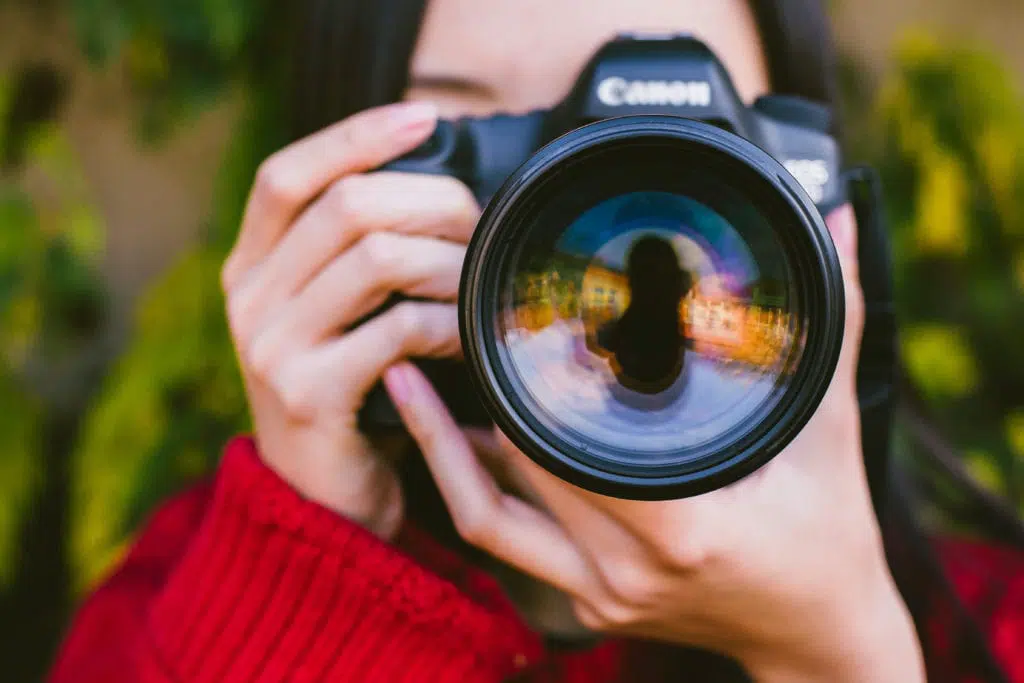
What is a DSLR camera?
DSLR stands for Digital Single Lens Reflex. It is a type of camera that uses an optical system with one lens.
A DSLR Camera is a digital camera body that allows light to enter a single lens where it hits a mirror that reflects the light either upwards or downward into the camera’s optical viewfinder. Pressing the shutter releases the reflex mirror, which flips up out of the way to let you take a photo. The shutter then slides open for a fraction of a second to allow light inside the camera and then closes.
As a photographer, this means you’re able to see exactly what your lens sees.
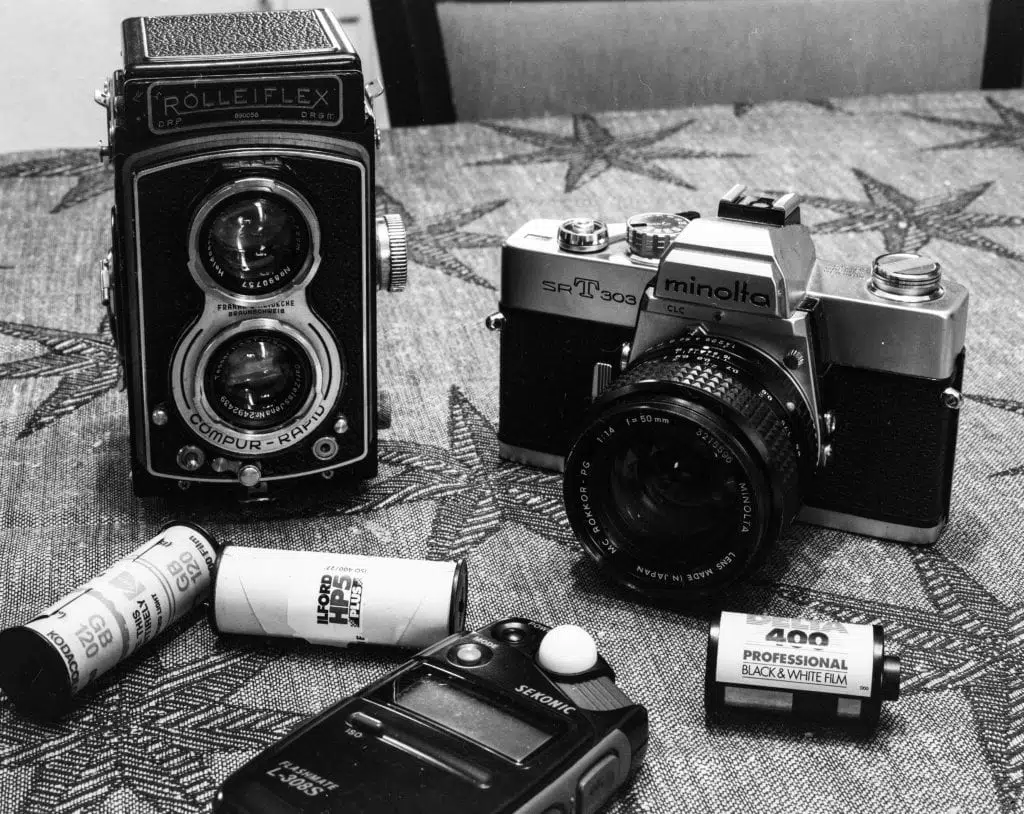
SLR style cameras were an upgrade from an earlier style of cameras, known as a twin lens reflex camera, where the camera had two lenses; one to expose the film and the other to look through to frame the shot.
There are many different types of DSLR cameras on the market today. While they were originally created for still photography, the latest development has been the ability for DSLR cameras to shoot stunning videos.
The type you’ll need depends largely on what your needs are for photography or videography as well as how much money you want to spend.
What is the Difference Between DSLR and SLR?
The D in DSLR, or Digital Single Lens Reflex, is a recent addition. SLR cameras shoot film, traditionally 35mm. Digital SLR cameras expose the image on a digital sensor.
SLR cameras allow you to see an exact, optical view of whatever you’re shooting. When you look through the viewfinder, you are looking at exactly what your lens sees, not an LCD screen. The light is entering the lens, bouncing off two mirrors, and going straight to your optical viewfinder.
When you take a photo, the mirror flips up, exposing the film or sensor in order to take the picture.
How a DSLR Camera Works
When light enters the camera lens of a digital SLR camera, a photographer sees their subject via a reflection of that light from a mirror inside the camera body.
This is different from mirrorless cameras, where the light goes directly to the image sensor.
When the photo is taken, the mirror swings out of the way and light hits the digital image sensor, where it is captured on an SD card.
The disadvantage of DSLR cameras, especially for beginners, is what you see through the viewfinder does not represent what the camera will capture.
The viewfinder works for framing, but it won’t accurately show the colors or exposure of your image when you adjust your camera’s aperture or shutter speed. Only after you take the photo and look at the preview on the back of your camera will you be able to know if what you captured matched what you envisioned when taking it.
Why use a Digital Single Lens Reflex Camera
DSLR cameras have a few key features that differentiate them from smartphones and point-and-shoot cameras:
- Interchangeable lenses
- Trigger for external strobe lighting
- Higher quality photos and video
- Ergonomic design for fast control of settings
DSLR cameras are the best choice for serious photographers because of their versatility. They have larger sensors, which capture more light.
They also have the ability to swap out lenses, open up a wide range of possibilities, from super wide angle to telephoto lenses.
DSLRs are often used for portrait photography because they allow photographers to control how much light reaches their subject by adjusting the aperture and shutter speed on the fly.
They’re great for action shots too, as these settings can be adjusted quickly and enable you to freeze the action with fast shutter speeds and telephoto lenses.
Unlike point-and-shoot cameras, DSLRs have interchangeable lenses, so the type of shots you can get from different lenses are nearly infinite. It’s also a more accurate photo capturing device. What you see through the viewfinder is what your camera sees, unlike point-and-shoot cameras that sometimes have offset viewfinders or low-resolution digital screens.
What is a Mirrorless Camera?
Mirrorless cameras are a newer breed of cameras that offer many benefits to the DSLR.
They’re typically less expensive than full-frame DSLRs, easier to carry around and lighter weight compared with their bigger counterparts.
This is because they don’t have mirror or prism systems as part of their design like older SLRs (hence the mirrorless name).
When looking through the viewfinder, instead of looking at an optical reflection of your subject, you’re looking at a tiny LCD screen showing the output from the sensor.
This means that whether you use the viewfinder or the camera’s larger LCD screen, you’ll see a more accurate representation of what your photo will look like when taking the picture.
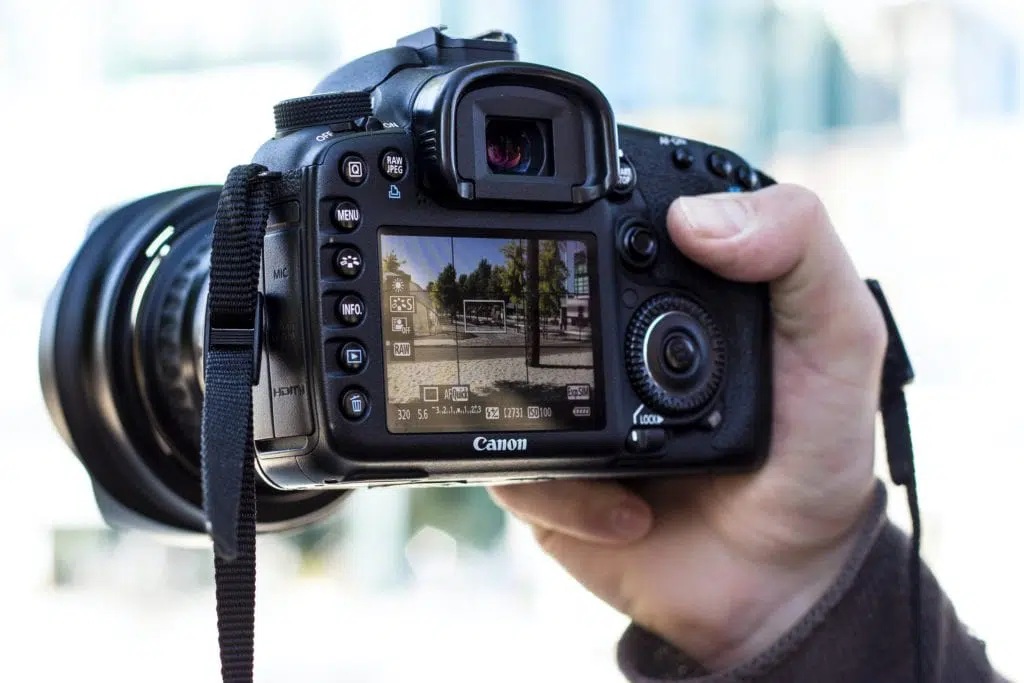
Mirrorless Cameras vs DSLR
Mirrorless cameras can be lighter and more compact than DSLRs. The best DSLR for you will depend on the subject you intend to shoot and the situation you use it in. But mirrorless cameras shine over DSLR when it comes to video recording.
Mirrorless cameras can offer the benefits of DSLR cameras. But their smaller size is what attracts professional and novice photographers alike.
Mirrorless cameras are popular because they don’t have a spinning mirror or shutter, which saves battery life, creates less noise when taking photos at fast speeds (at least in comparison to a DSLR), and allows for greater flexibility in connecting accessories to your camera.
While both styles of camera are more expensive than entry-level point-and-shoot cameras, you can still get a good camera with lens for under $1000.
The difference between cropped sensor and full-frame sensor cameras
DSLR cameras have a sensor that captures light, and DSLRs can come in two different formats: cropped sensors and full-frame sensors.
Cropped sensor DSLRs are cheaper than full-frame DSLRs because they use less expensive technology to produce a similar image quality.
Full-frame DSLRs offer higher resolution images which makes them more ideal for professional photographers who want to capture the highest quality photos and video.
Buying your first DSLR camera
DSLRs are a great camera if you want to take higher-quality photos and video. While they might seem expensive, the investment will pay off in the long run when it comes to your photography and video skillset. If you’re ready for an upgrade from your point-and-shoot or smartphone camera, we have some suggestions of what to look out for when purchasing one!
It’s important to keep in mind that the camera body and lens are sold separately, though sometimes you can find a deal that includes both.
Start with a basic lens. As you take more photos or videos and discover your needs, then you can upgrade to a better lens that fits your requirements.
Just budget accordingly. Some lenses can cost more than the camera body itself!
Another great way to test cameras is to rent them. For a small day rate, you can rent just about any camera or lens and test it out before buying it. This is also a great option for traveling or using specialty lenses you only need for a specific shoot. Two great rental options are BorrowLenses and Lensrentals.
The Best Features to Look for in a Digital SLR Camera
There are a lot of options when it comes to choosing a DSLR camera.
A few key features to look for in a DSLR:
- The type of sensor and sensor size
- Continuous shooting speed
- Is a lens included
- Does it include video recording features
For more specific recommendations, check out a few of our camera buying guides:
- The 10 Best DSLR and Mirrorless Cameras for Shooting Video in 2021
- The Best DSLR and Mirrorless Cameras for Under $1000
- The 13 Best Cameras for YouTube Vlogging in 2021
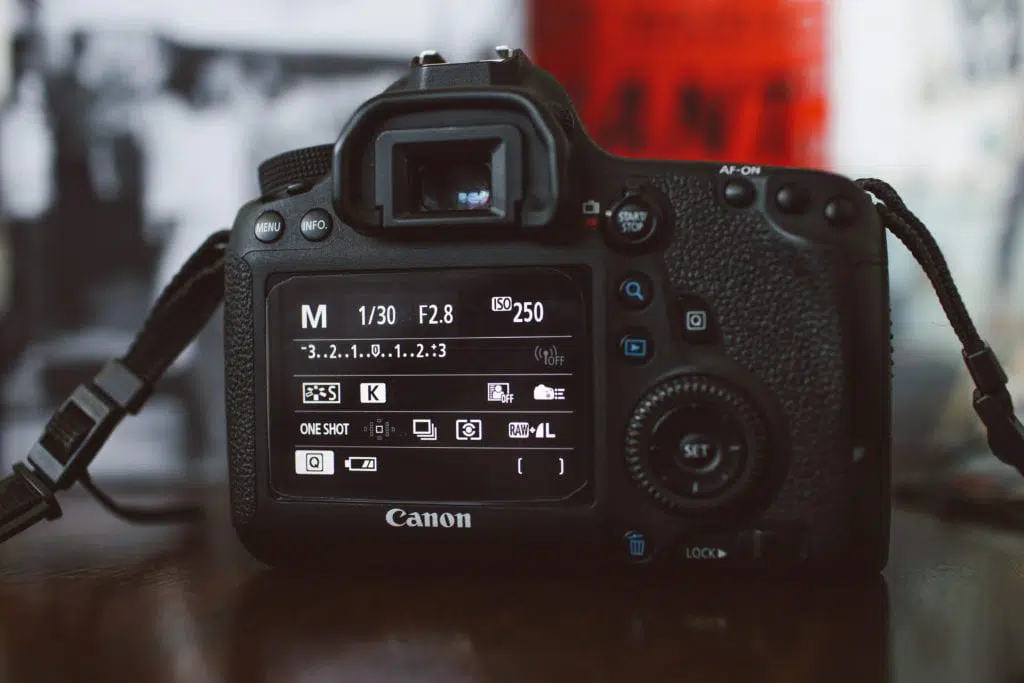
Tips for Taking Great Photos with Your DSLR Camera
DSLR cameras are complicated devices with a lot of features that beginners find confusing.
To make your experience easier, it’s important to know what those buttons and functions do! We’ll walk you through the most commonly used DSLR camera settings so that next time you’re taking photos, they will turn out better than ever before.
The two most common settings you’ll adjust are aperture and shutter. The aperture is an adjustable opening in the DSLR camera lens and controls how much light gets to your DSLR sensor. The shutter is a fast-moving cover that exposes the camera’s sensor to light from the scene you’re photographing.
Exposing a photograph is a balance between these two numbers. For fast-action photos where you want everything to be sharp and frozen in time, you’d want a fast shutter speed (higher number as shutter speed is measure in fractions of a second) and a low aperture to let more light in.
For shots where you want a little bit of blur, a slower shutter speed would be more appropriate.
Just be careful – if your shutter speed is too low your photos could look blurry. 1/30 shutter speed is about the limit someone could handhold their camera and still get a sharp photograph. Anything slower than that and you’d want to use a tripod or monopod.
Video & DSLR
How to Shoot Video with a DSLR Camera
DSLR cameras are some of the best for shooting video. Even though these cameras were made to take amazing still pictures, they shoot great video too.
The main benefit with DSLRs is that they allow you more control over exposure and depth-of-field than their point and shoot counterparts do
The first thing most people notice about a
Tips for shooting video with your DSLRs
Here are some tips for shooting video with a DSLR:
- Focus on sound – especially if someone is talking. Many new cameras have microphone accessories you can attach on top of the camera for improved sound.
- Use a tripod or stabilizer for steady footage
- Keep the camera on shutter priority. This will adjust your camera’s aperture for exposure instead of changing the shutter angle, which can make your video movement look weird
- The possibility with extra lenses creates near-limitless shot possibilities, but it’s not just the lense that matters. Moving your camera to different positions (closer, further away, etc) combined with different lenses can create even more dynamic shot options.
You can also try out some of their other features like slow motion capture or time lapse.
Chose the best focus setting. That could mean face tracking if your camera supports it. That could also mean manual focus if you need ultimate control over what your camera should focus on.
We hope this article gave you a good overview of what a DSLR camera is, how it compares to mirrorless cameras, and what to look for when purchasing one.

